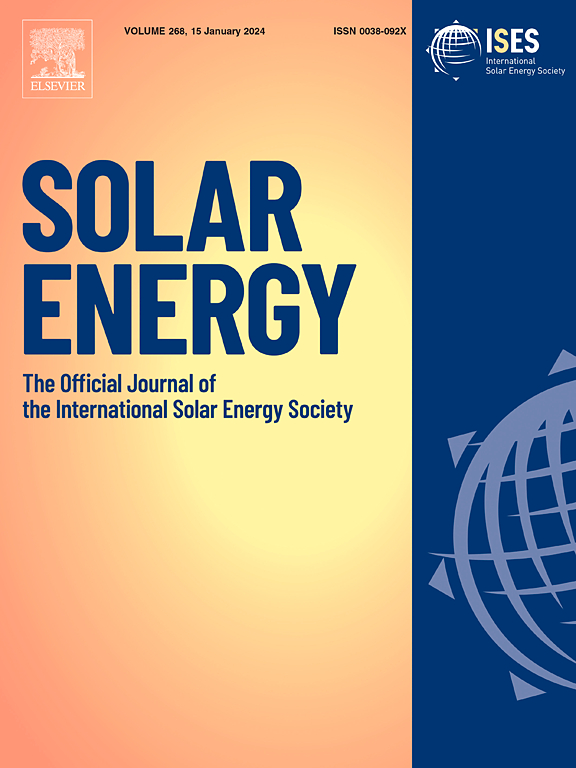Reduced order modeling of a fluidized bed particle receiver for concentrating solar power with thermal energy storage
IF 6
2区 工程技术
Q2 ENERGY & FUELS
引用次数: 0
Abstract
Oxide particles can serve as both the heat transfer and thermal energy storage (TES) media for next-generation concentrating solar power (CSP) plants where high-temperature TES enables dispatchable electricity from efficient power cycles with firing temperatures above . Transferring heat to flowing particles at such high temperatures in a MW-scale central tower receiver remains a challenge for the CSP community. For indirect receivers with external walls to contain the particles, maintaining wall temperatures below the limits of structural metal alloys requires high heat transfer coefficients between the wall and the moving particle stream. Bubbling fluidization of downward-flowing particles can sustain high bed-wall heat transfer coefficients ( 1000 W m−2 K−1). Using experimentally calibrated correlations for bed-wall heat transfer and vertical particle dispersion, this study implements an axially discretized zonal model of a counterflow fluidized bed receiver to explore how bubbling fluidization may enable indirect cavity particle receivers. High bed-wall heat transfer coefficients support solar fluxes on angled cavity walls kW m−2 at peak aperture fluxes of 980 kW m−2 while maintaining external wall temperatures . Lateral particle dispersion enables hotter particles near the receiver leading edge to mix with cooler particles further from the leading edge to lower maximum external wall temperatures. Parametric studies identify how mass fluxes, particle dispersion, and solar concentrations impact indirect receiver thermal efficiency and uniformity for a CSP plant. These studies provide a basis for the design of indirect fluidized-bed cavity receivers that can maintain particle outlet temperatures for TES above 750.
求助全文
约1分钟内获得全文
求助全文
来源期刊

Solar Energy
工程技术-能源与燃料
CiteScore
13.90
自引率
9.00%
发文量
0
审稿时长
47 days
期刊介绍:
Solar Energy welcomes manuscripts presenting information not previously published in journals on any aspect of solar energy research, development, application, measurement or policy. The term "solar energy" in this context includes the indirect uses such as wind energy and biomass
 求助内容:
求助内容: 应助结果提醒方式:
应助结果提醒方式:


